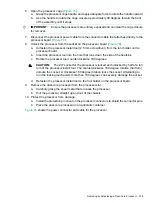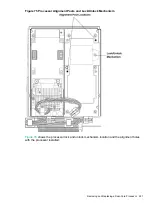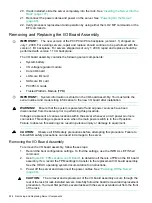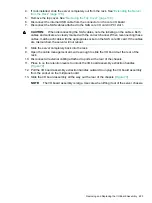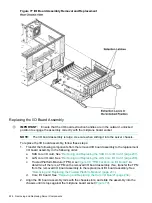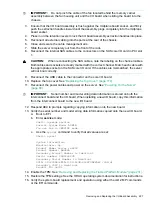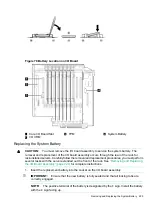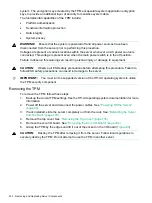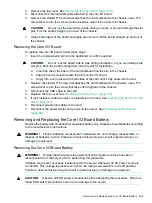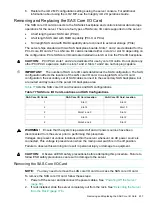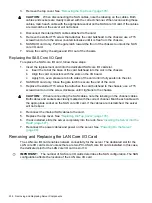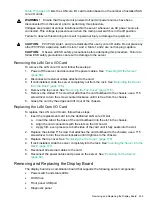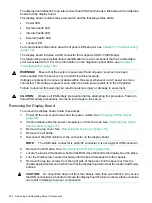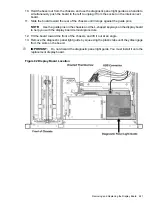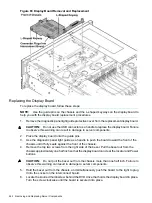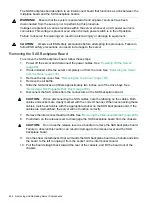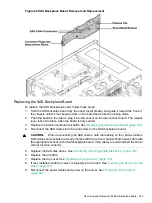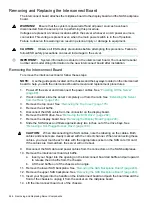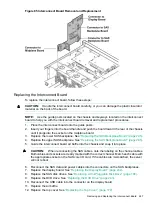
system. The encryption keys created by the TPM encapsulate system application encryption
keys to provide an additional layer of security for sensitive system data.
The fundamental capabilities of the TPM include:
•
Platform authentication
•
Sensitive information protection
•
Data integrity
•
System privacy
WARNING!
Ensure that the system is powered off and all power sources have been
disconnected from the server prior to performing this procedure.
Voltages are present at various locations within the server whenever an AC power source is
connected. This voltage is present even when the main power switch is in the off position.
Failure to observe this warning can result in personal injury or damage to equipment.
CAUTION:
Observe all ESD safety precautions before attempting this procedure. Failure to
follow ESD safety precautions can result in damage to the server.
IMPORTANT:
You must run the supported version of the HP-UX operating system to utilize
the TPM security component.
Removing the TPM
To remove the TPM, follow these steps:
1.
Back up the current TPM settings. See the HP-UX operating system documentation for more
information.
2.
Power off the server and disconnect the power cables. See
3.
If rack installed, slide the server completely out from the rack. See
.
4.
Remove the top cover. See
“Removing the Top Cover” (page 178)
.
5.
Remove the core I/O board. See
“Removing the Core I/O Board” (page 234)
.
6.
Grasp the TPM by the edges and lift it out of the socket on the I/O board (
CAUTION:
Destroy the TPM after removing it from the server. Follow local regulations to
securely destroy the TPM. Do not attempt to use the TPM in another server.
232
Removing and Replacing Server Components


